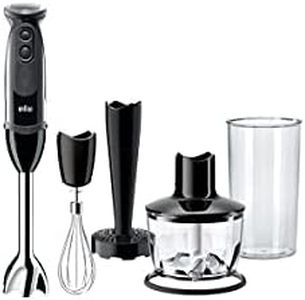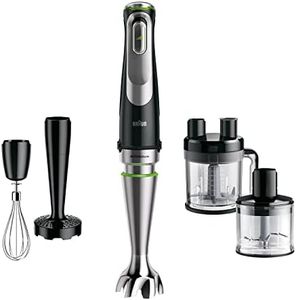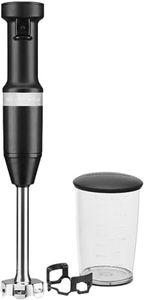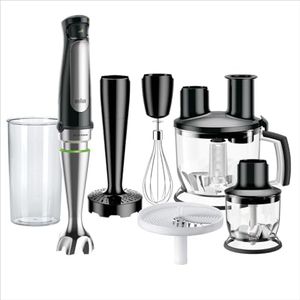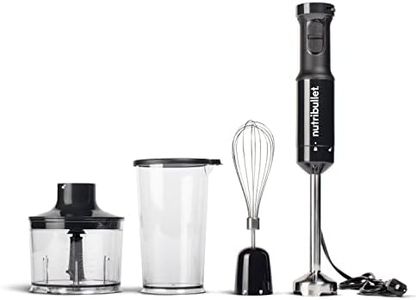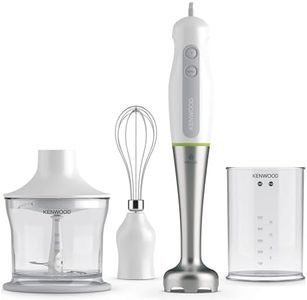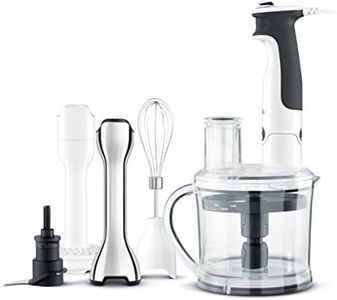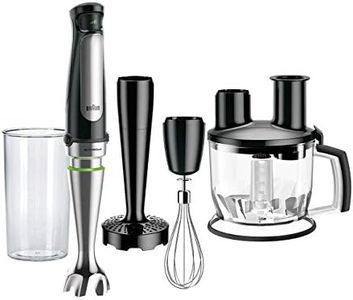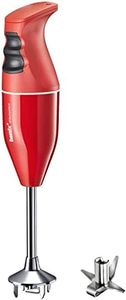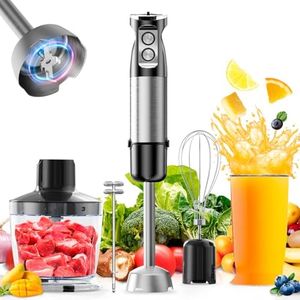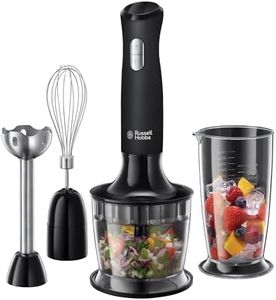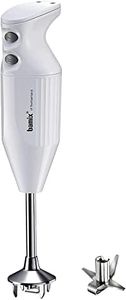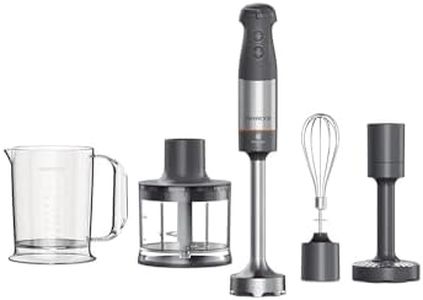We Use CookiesWe use cookies to enhance the security, performance,
functionality and for analytical and promotional activities. By continuing to browse this site you
are agreeing to our privacy policy
10 Best Hand Blenders
From leading brands and best sellers available on the web.By clicking on a link to a third party's website, log data is shared with that third party.
Buying Guide for the Best Hand Blenders
Hand-blenders, also known as immersion blenders or stick blenders, are versatile kitchen gadgets used for mixing, pureeing, and emulsifying foods directly in bowls, pots, or pitchers. Choosing the right hand-blender can improve meal preparation, save time, and provide smoother results in your recipes. To find a model that is a great fit for your needs, it’s important to understand the main features and specifications, as these will impact how easy and effective your blending tasks will be.Power (Wattage)Power in hand-blenders is measured in watts and tells you how strong the motor is. Higher wattage means the blender can handle tougher ingredients and larger quantities more easily, whereas lower wattage is better suited to lighter tasks like making smoothies or blending soups. Typically, wattage values range from about 200W to over 1000W. For occasional, basic blending, a lower wattage model works well. If you often work with thick mixtures or tough ingredients like nuts and ice, a higher-wattage blender will give you smoother, faster results.
Speed SettingsThe speed settings let you control how fast the blades spin, affecting the texture and consistency of your blend. Some hand-blenders offer a single speed, while others have multiple settings or even variable speed controls. Fewer speeds are fine for basic tasks, but multiple speeds give more control for delicate recipes or when switching between pureeing and chopping. If you want versatility and precision, consider a model with several speed options.
Blade Material and DesignBlades do the actual blending, so their material and shape matter for performance and durability. Stainless steel blades are the most common as they are rust-resistant and strong, making them last longer and cut through more kinds of food. Blade designs also differ—some are better at pureeing, while others are optimized for chopping. For frequent use or multiple kitchen tasks, prioritize models with robust, stainless steel blades.
Attachments and AccessoriesMany hand-blenders come with extra attachments like whisk, chopper, or beaker. These expand what the blender can do—for instance, a whisk is great for whipping cream or eggs, while a chopper can handle small food processing tasks. If you only plan to blend soups or smoothies, you may not need extras. But if you want your hand-blender to replace several kitchen tools, look for models that come with attachments suited to your cooking style.
Ease of CleaningSince hand-blenders are used directly in food, they should be easy to clean to save you time and effort. Models with detachable blending arms can be rinsed or placed in the dishwasher for easy cleaning, while fixed shafts need more gentle hand washing. If you value convenience, choose a hand-blender with parts that are dishwasher-safe and designed for easy removal.
Weight and ErgonomicsBecause hand-blenders are held in the hand during use, their weight and shape affect comfort, especially during longer blending tasks. Lighter models reduce hand fatigue, and ergonomic grips make it safer and more pleasant to use. If you have reduced strength or plan to blend for extended periods, opt for a lighter hand-blender with a comfortable grip that matches your hand size.
Corded vs. CordlessYou can choose between corded and cordless (battery-powered) hand-blenders. Corded models generally provide consistent power, making them good for continuous use, while cordless versions offer more flexibility and portability but may need recharging. If you often blend away from an outlet or like the freedom of movement, a cordless model is handy. If you want maximum power and reliability, go for a corded option.
